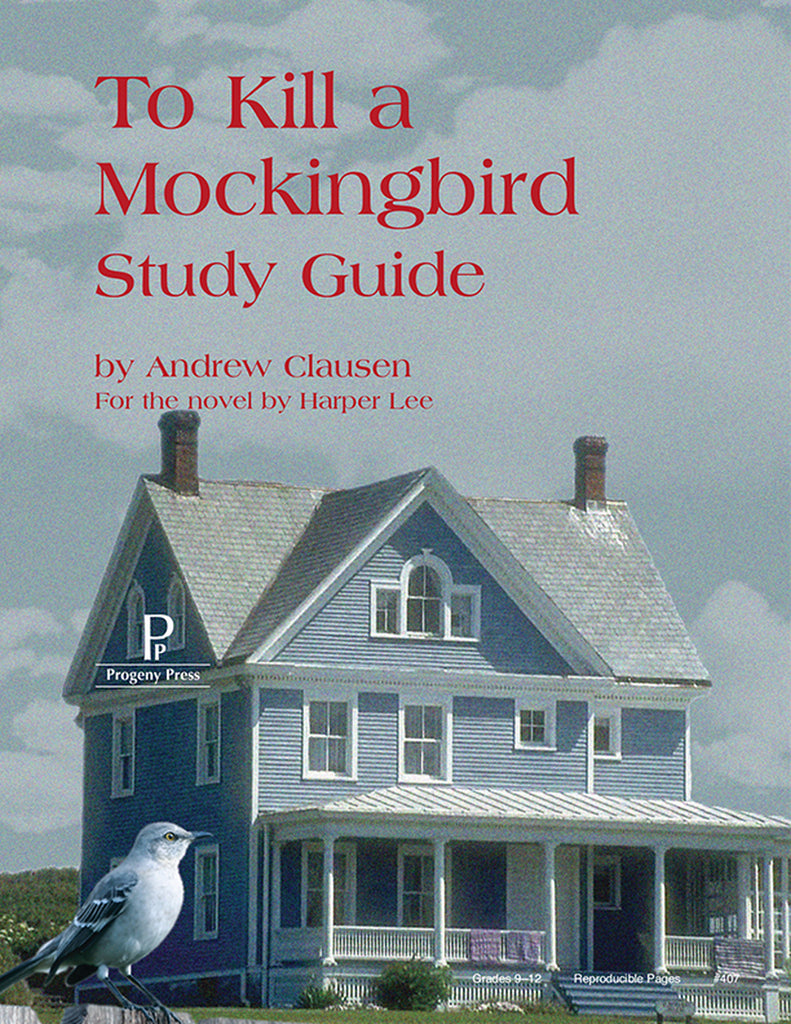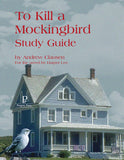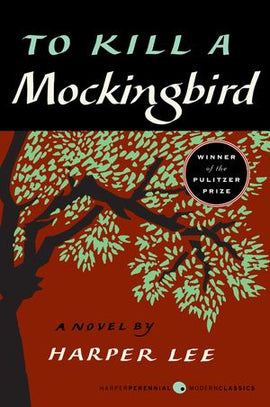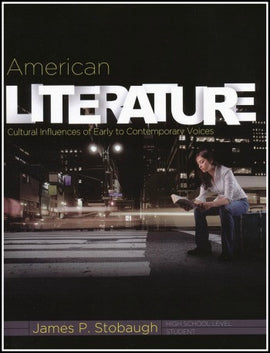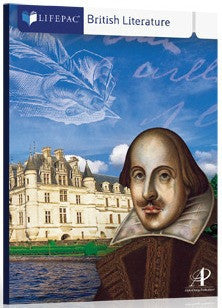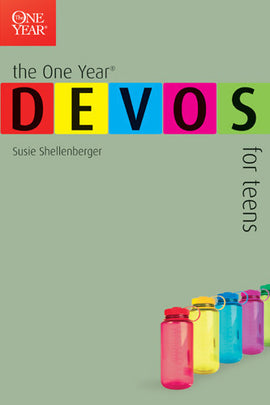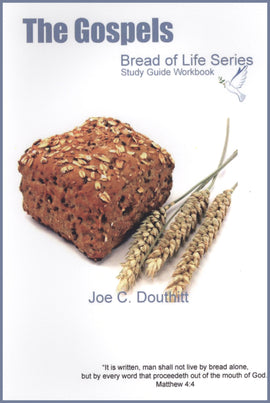To Kill A Mockingbird Study Guide (Grades 9-12)
PULITZER PRIZE FOR FICTION, PRESIDENTIAL MEDAL OF FREEDOM, #6 ON BIG READ LIST (UK’S TOP 200), #1 TIME ALL-TIME BEST 100 ENGLISH LANGUAGE NOVELS 1923-2005, BROTHERHOOD AWARD NATIONAL CONFERENCE OF CHRISTIANS & JEWS, PAPERBACK OF YEAR BESTSELLERS MAGAZINE, ONE OF THE NEW YORK PUBLIC LIBRARY'S BOOKS OF THE CENTURY, #78 ON THE 100 BEST NOVELS WRITTEN IN ENGLISH, #73 ON THE 100 GREATEST NOVELS OF ALL TIME, THE GREAT AMERICAN READ #1 (PBS.ORG TOP 100)
A heart-wrenching and touching coming-of-age tale set in the 1930s South, poisoned by bigotry and racism. Scout will witness her father, a white lawyer, defy public opinion to defend a black man falsely accused of rape.
In the sleepy southern town of Maycomb, Alabama, Scout Finch and her brother Jem revel in the glory days of childhood, trading stories and superstitions with Dill Harris, the imaginative nephew of their neighbor. Dill is especially fascinated with the legends surrounding the mysterious Boo Radley, who stays in his house all day, but, according to rumors, comes out at night to dine on squirrels and cats and peek in windows. Their summer days are spent adding to the Boo Radley legends or devising ways to make Boo come out.
Scout becomes increasingly uneasy about playing games that revolve around Boo Radley. Guided by the wisdom of her father, Atticus, and Calpurnia, their cook, Scout is learning the ways and unwritten rules of southern society and how to get along in it.
Atticus is a lawyer with an extremely difficult case on his hands. Tom Robinson, a black man, has been accused of raping a white girl. With deep-seated prejudice working against him, Atticus fights to prove his client innocent. Scout and Jem watch while their otherwise civilized neighbors show subtle disapproval or outright distaste for Atticus's defense of a black man.
Through Harper Lee’s Pulitzer Prize-winning story, To Kill a Mockingbird, students will learn:
Background Information: Learn the background behind the civil rights movement and equal rights.
Author Biography: Learn more about Harper Lee.
Before-You-Read Activities: Written or oral reports on American Civil War, Slavery, or Civil Rights movement, study the U.S. Constitution, Jim Crow laws, listen to Martin Luther King, Jr. and write a response.
Vocabulary words used throughout the novel, utilizing a variety of activities to stimulate retention and growth.
Literary Techniques: In context, synonym, setting, characterization, point of view, exposition, foreshadowing, similes, metaphors, extended metaphor, foil, irony, dynamic and static characters, theme, motif.
Moral Lessons and Character Values: Point of view, superstition, rumor, private and public life being the same, pride, reaction to insults, courage, unity, division, justice, discrimination, racial injustice, hypocrisy.
Activities and Writing Assignments: including five choices of comparison essays, race relations, and equality.
Suggestions for Further Reading: We include an in-depth reading list of more books by the same author(s) and other books that tie in with, or are similar to, To Kill a Mockingbird. Movie suggestions included.
All of the unit lessons are written from a Christian worldview!
Features:
- Large 8.5x11 format is convenient to read and easy on the eyes
- Every question has plenty of whitespace for student’s answers
- Encourages neat and clean handwriting practice
- Easily transports without the need for a laptop or other expensive equipment
- Provides a permanent record of the student’s work
- Convenient, removable answer key included for the teacher!
For the Book By: Harper Lee
Paperback, ISBN 9781586093860, SKU 1091603
| Book Title | To Kill A Mockingbird Study Guide (Grades 9-12) |
| Publisher: | Progeny Press |
| Author | Andrew Clausen |
A heart-wrenching and touching coming-of-age tale set in the 1930s South, poisoned by bigotry and racism. Scout will witness her father, a white lawyer, defy public opinion to defend a black man falsely accused of rape.
In the sleepy southern town of Maycomb, Alabama, Scout Finch and her brother Jem revel in the glory days of childhood, trading stories and superstitions with Dill Harris, the imaginative nephew of their neighbor. Dill is especially fascinated with the legends surrounding the mysterious Boo Radley, who stays in his house all day, but, according to rumors, comes out at night to dine on squirrels and cats and peek in windows. Their summer days are spent adding to the Boo Radley legends or devising ways to make Boo come out.
Scout becomes increasingly uneasy about playing games that revolve around Boo Radley. Guided by the wisdom of her father, Atticus, and Calpurnia, their cook, Scout is learning the ways and unwritten rules of southern society and how to get along in it.
Atticus is a lawyer with an extremely difficult case on his hands. Tom Robinson, a black man, has been accused of raping a white girl. With deep-seated prejudice working against him, Atticus fights to prove his client innocent. Scout and Jem watch while their otherwise civilized neighbors show subtle disapproval or outright distaste for Atticus's defense of a black man.
Through Harper Lee’s Pulitzer Prize-winning story, To Kill a Mockingbird, students will learn:
Background Information: Learn the background behind the civil rights movement and equal rights.
Author Biography: Learn more about Harper Lee.
Before-You-Read Activities: Written or oral reports on American Civil War, Slavery, or Civil Rights movement, study the U.S. Constitution, Jim Crow laws, listen to Martin Luther King, Jr. and write a response.
Vocabulary words used throughout the novel, utilizing a variety of activities to stimulate retention and growth.
Literary Techniques: In context, synonym, setting, characterization, point of view, exposition, foreshadowing, similes, metaphors, extended metaphor, foil, irony, dynamic and static characters, theme, motif.
Moral Lessons and Character Values: Point of view, superstition, rumor, private and public life being the same, pride, reaction to insults, courage, unity, division, justice, discrimination, racial injustice, hypocrisy.
Activities and Writing Assignments: including five choices of comparison essays, race relations, and equality.
Suggestions for Further Reading: We include an in-depth reading list of more books by the same author(s) and other books that tie in with, or are similar to, To Kill a Mockingbird. Movie suggestions included.
All of the unit lessons are written from a Christian worldview!
Features:
- Large 8.5x11 format is convenient to read and easy on the eyes
- Every question has plenty of whitespace for student’s answers
- Encourages neat and clean handwriting practice
- Easily transports without the need for a laptop or other expensive equipment
- Provides a permanent record of the student’s work
- Convenient, removable answer key included for the teacher!
For the Book By: Harper Lee
Paperback, ISBN 9781586093860, SKU 1091603

